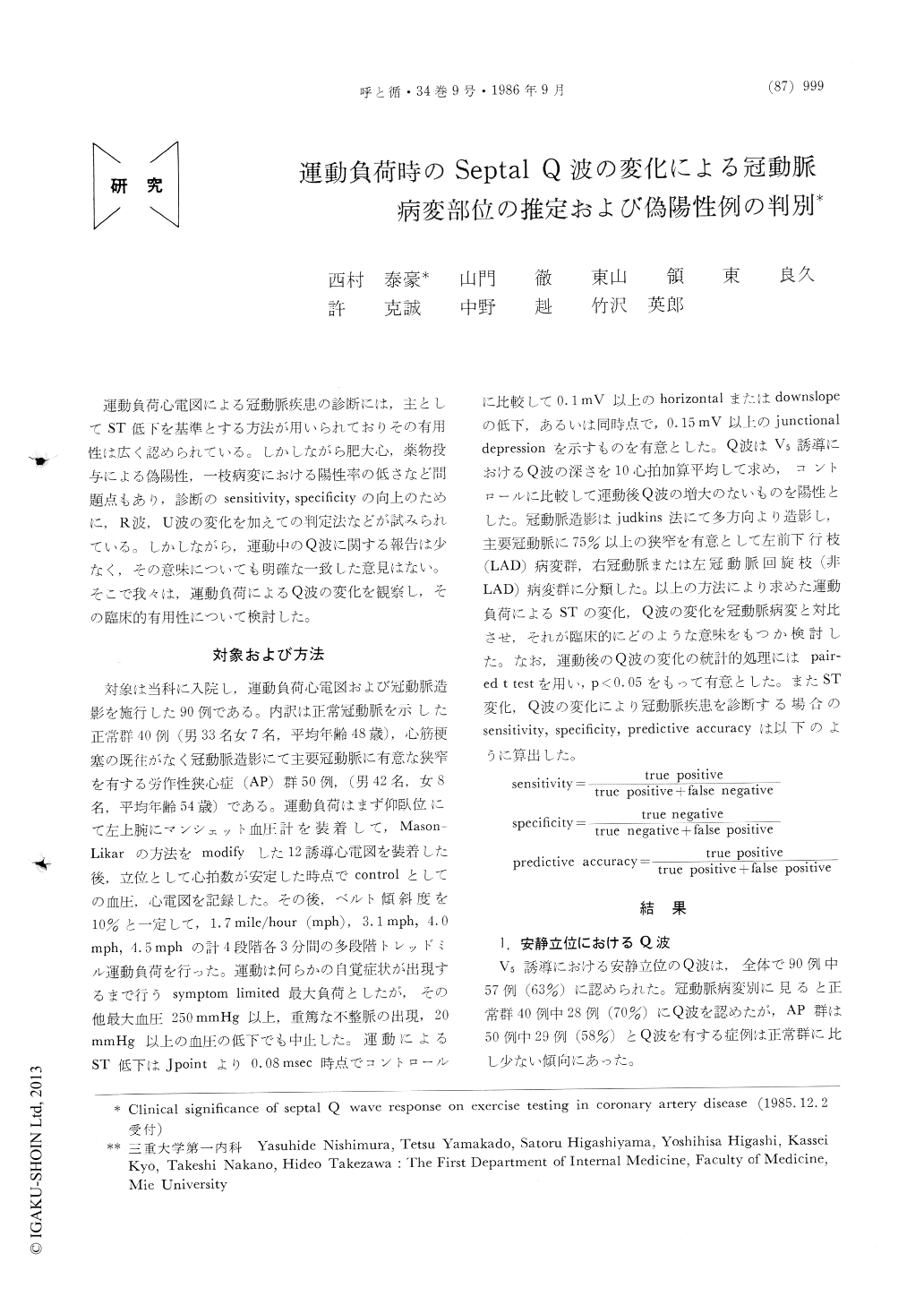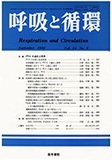Japanese
English
- 有料閲覧
- Abstract 文献概要
- 1ページ目 Look Inside
運動負荷心電図による冠動脈疾患の診断には,主としてST低下を基準とする方法が用いられておりその有用性は広く認められている。しかしながら肥大心,薬物投与による偽陽性,一枝病変における陽性率の低さなど問題点もあり,診断のsensitivity,specificityの向上のために,R波,U波の変化を加えての判定法などが試みられている。しかしながら,運動中のQ波に関する報告は少なく,その意味についても明確な一致した意見はない。そこで我々は,運動負荷によるQ波の変化を観察し,その臨床的有用性について検討した。
50 patients with angina pectoris (AP) and 40 normal subjects were studied to investigate the value of septa] Q wave change in precordial lead of V5 on maximal treadmill testing with special reference to coronary angiographic findings. All patients with AP had major coronary narrowing more than 75%. 39 of 50 patients with AP had at least left anterior descending artery (LAD) lesions (LAD group), and 11 patients had no LAD lesions (non LAD group). The increases of septal Q wave amplitudes with exercise were more common in normal subjects or non LAD group than in LAD group (73%, 60% and 10%). 11 of 12 normal subjects with normal coronary artery but ST segment depression on exercise showed a increse in septal Q wave during exercise. The sensitivity and specificity of exercise indu-ced ST depression for coronary artery disease were 93 % and 81%, respectively. When a positive response for coronary artery disease was defined as the decreased or no change in Q wave amplitude with exercise, criterions of combination of ST depression and Q wave on exercise improvd the sensitivity and specificity, (93 %, 96%). Thus, septal Q wave response may be use-ful for the detection of coronary artery disease, espe-cially LAD lesions, and to exclude the false positive responses of ST depression on exercise.

Copyright © 1986, Igaku-Shoin Ltd. All rights reserved.


